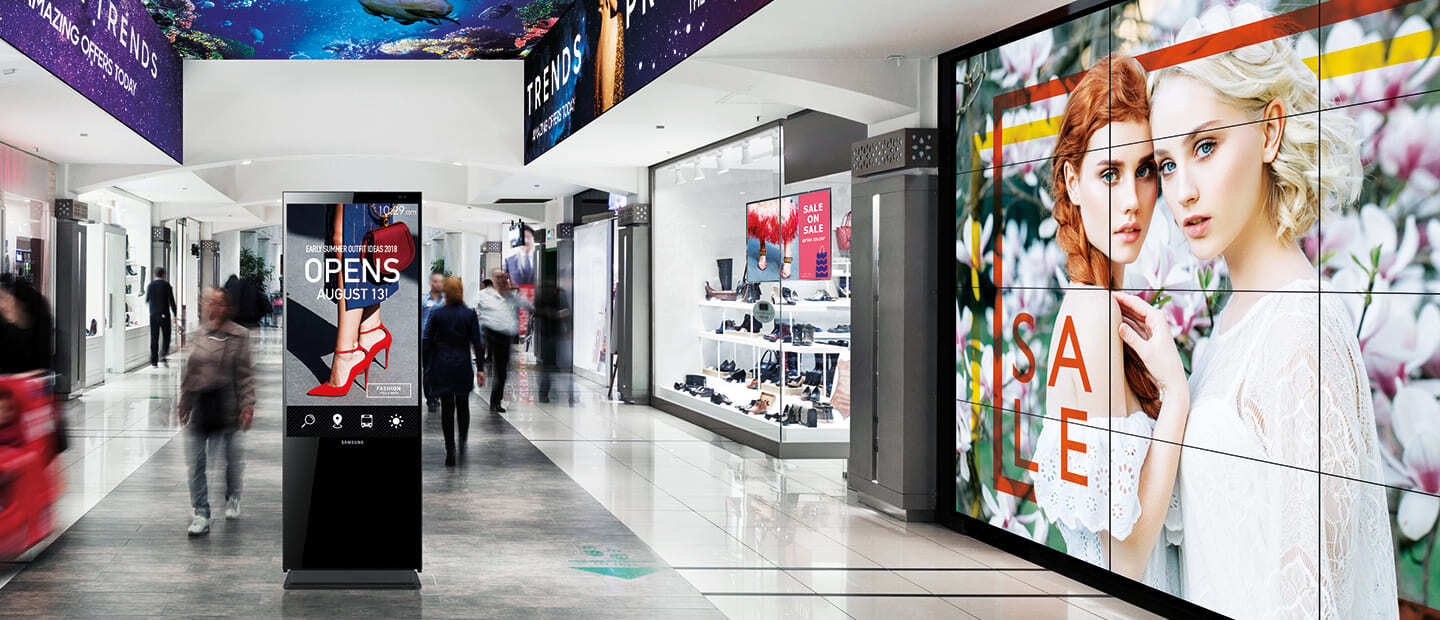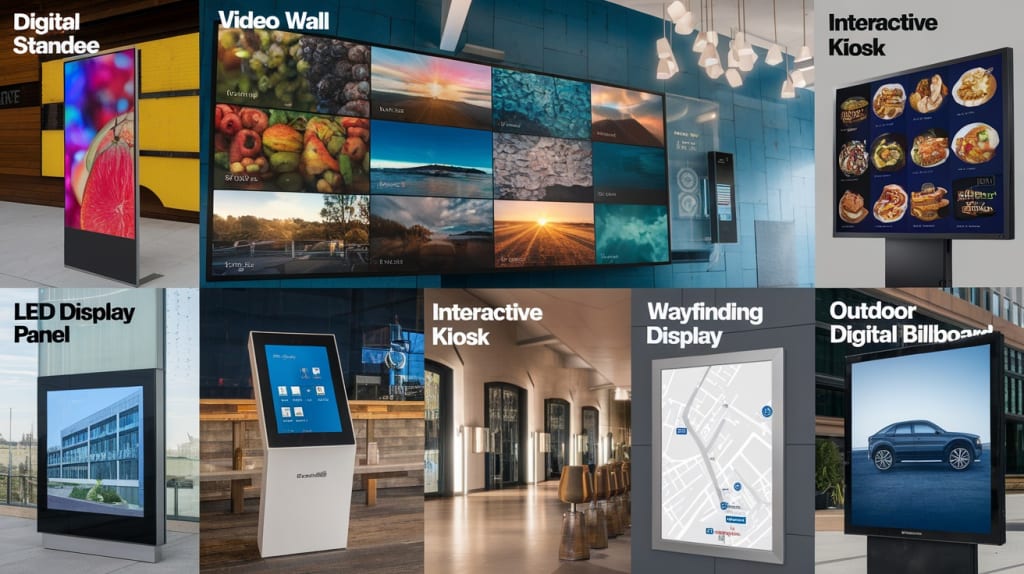In today’s world, where people only spend 3–5 seconds paying attention to a piece of information, standing out has become a survival challenge for businesses.
Imagine walking through a bustling shopping mall: hundreds of stores, signs, and posters surround you. But among the sea of visuals, a large LED screen displaying vibrant videos with 3D effects and a clear message instantly catches your eye.

That is the power of Digital Signage – a modern communication tool that is transforming how businesses engage with their customers.
Digital Signage is a form of advertising that uses digital display devices (LCD, LED, OLED, projectors, etc.) to showcase multimedia content such as images, videos, text, and live data.

Unlike traditional static billboards that are costly and time-consuming to update, Digital Signage allows businesses to instantly update information, synchronize it across multiple locations, and manage it remotely with ease.
Businesses no longer need to reprint numerous posters or banners when updating a promotion. With just a few clicks, content can be updated simultaneously across hundreds of screens in multiple locations.
Dynamic images, videos, and smooth transitions help messages stay in customers’ minds more effectively than static boards.
According to Nielsen, digital content attracts over 400% more views than traditional formats.
With the support of AI and sensors, Digital Signage can display content tailored to age, gender, weather conditions, or time of day. This increases relevance and makes customers feel as if the brand is speaking directly to them.
Studies show that placing Digital Signage at the point of sale can increase product revenue by 10–30%, thanks to its ability to influence purchasing decisions on the spot.

Hardware
High-resolution LCD/LED/OLED screens
Media players or integrated processors
Mounting brackets, protective casings, network connection devices
Content Management Software (CMS)
Scheduling and remote management
Support for multiple media formats
Integration with AI and live data sources
Supporting Systems
Motion sensors, facial recognition cameras
Bluetooth beacons, NFC, QR Codes for interaction
Synchronized audio systems
AI will make content displays smarter, predict customer needs and behaviors, and even auto-adjust to optimize effectiveness.
Super-bright, sharp images with lower power consumption, creating “touchable” realism, will become the new standard.
Operate thousands of screens worldwide, update instantly, and reduce staffing costs.
Viewers can touch the screen, scan QR codes, play games, or receive promotions instantly.
A coffee chain in Vietnam struggled to promote seasonal campaigns effectively. After deploying Digital Signage across 50 stores:
Content update time dropped from 3 days to just 15 minutes
Holiday season sales increased by 22% compared to the previous year
Customers shared more on social media, helping the brand spread organically
High initial investment → Start small and expand gradually
Content management → Requires a creative content strategy to avoid repetition and dullness
Data security → Use encryption and strict access control
Digital Signage is a strategic communication channel between brands and customers — a bridge between products and emotions, between information and purchasing actions.
Businesses that adopt this trend early will gain a significant competitive advantage, optimize marketing costs, and build a strong brand presence in customers’ minds.

💡 Let Digital Signage tell your brand story – in a vibrant, modern, and inspiring way.